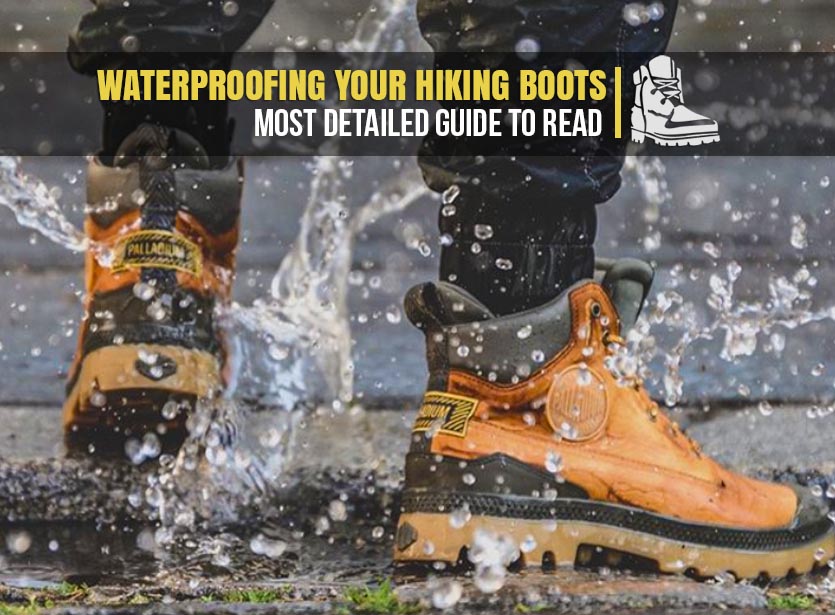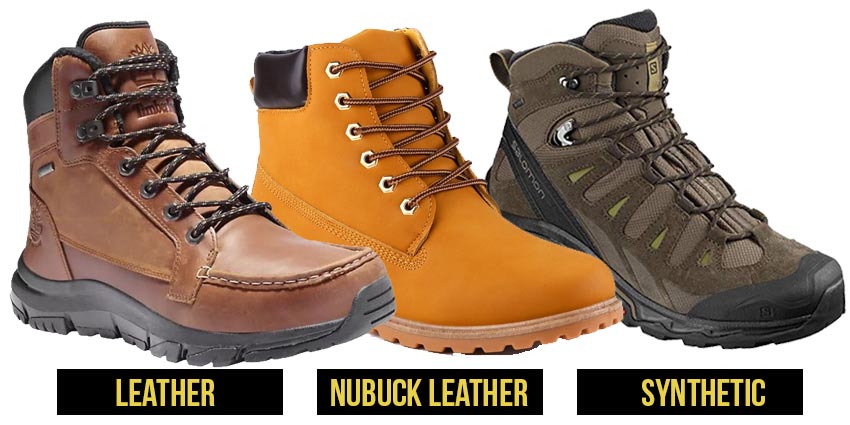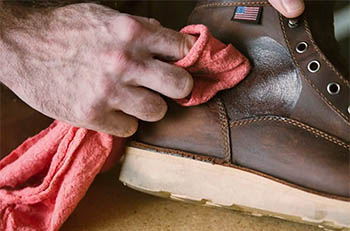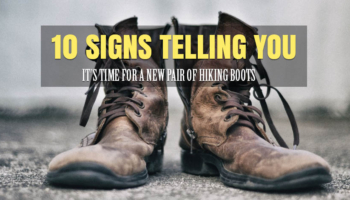
Even if you paid the extra buck for your hiking boots, it doesn’t mean that you shouldn’t take good care of them. Cleaning your boots after every hike, de-odorizing your footwear when necessary is just as important as waterproofing them.
As hiking boots are made with various materials, it makes sense that waterproofing techniques are different too.
Why should you waterproof your hiking footwear?
Ideally, your waterproof boots will remain that way until they’re completely worn out. However, typical use, wear, and tear will affect the waterproof ability of your footwear. The more you wear the boots, the sooner you lose the waterproofness of your feet. Regular waterproofing of the hiking boots is essential, as you never how the weather or trails will be on your next hike.
There are numerous products for waterproofing the hiking boots, and each is designed for specific materials. You should know at least the essential materials used for hiking boots before finding out about waterproofing.
Boots that are supposed to last for a couple of years will need waterproofing treatment several times in the hiking season. How often you go hiking and in which weather conditions are also factors impacting the life span of your footwear. If you don’t remember when was the last time you waterproofed the shoes, it’s better to apply a new coating to play it safe.
Standard materials and waterproofing the hiking boots

Even if the hiking boots are made with a combination of various materials, some of them are more common than others:
Leather
Full-grain leather is made with hyde of animals, feeling all shiny and smooth out of the box. Leather boots are naturally waterproof, but they can also feature a breathable waterproof membrane for better performance against water.
Nubuck leather
Nubuck leather has a brushed effect as it’s buffered down, resembling suede. The whole process makes it thinner than full-grain leather, which also translates in less durability and waterproofness. It’s very common for nubuck leather boots to feature a breathable waterproof membrane.
Synthetic
Synthetic boots (non-leather) are human-made and come in a great variety. They’re not always waterproof, but a gore-tex membrane od DWR coating makes them waterproof without compromising the breathability.
Do you have to waterproof gore-tex boots?
 No, you’re not the only one being surprised by the fact that you have to waterproof gore-tex boots. Like any other fabric used in inclement weather, gore-tex will also start to lose its properties after some time.
No, you’re not the only one being surprised by the fact that you have to waterproof gore-tex boots. Like any other fabric used in inclement weather, gore-tex will also start to lose its properties after some time.
Gore-tex is impressive, but its performance still depends on many factors, such as well-balanced moisture on both sides of the membrane. You can maintain its abilities by waterproofing the boots from time to time, without affecting the upper material’s stability or breathability.
Tip
You shouldn’t use oil or grease for waterproofing gore-tex boots, as you will affect the membrane’s breathability. Look for a sponge or spray treatment instead, but never skip the instruction for use.
What’s the most common method for waterproofing hiking boots?
Cleaning the boots is the first step to take for waterproofing. Even if there are many aspects to check when cleaning the shoes, here are the main steps to take:
- Remove the laces from your boots.
- Use a brush for cleaning off the mud and dirt.
- Use a mild detergent for washing the footwear. If necessary, you may soak the boots in the water.
- Rinse the footwear with water
- Towel dry the footwear.

Tip
It would help if you didn’t soak nubuck leather boots, as water will soften the leather, and it may even stain it. Don’t wash the shoes if they’re made with suede or nubuck leather.
Waterproofing leather boots
Numerous hiking boots made with full-grain leather don’t feature a waterproof membrane, relying on the natural abilities of t leather to repel water. However, in time, leather boots may leak, so a waterproofing treatment is necessary. Waterproofing the boost maintains your feet dry throughout the hiking, but also expands the lifespan of the footwear.
After cleaning the boots, you should let them dry completely. The waterproofing treatment is more effective if applied to wet footwear, especially leather shoes. The treatment will settle into the leather faster.
Wax as a waterproofing method

Wax is reliable for conditioning and lubricating full-grain leather, especially because it doesn’t soften the leather. Please don’t use it with gore-tex, as it will affect the breathability. Waxing your leather boots is useful, but it takes a bit of time:

- Heat the wax to soften it
- Work the wax into your clean and wet leather with a cloth. Some rubber gloves will work to
- Go through it once again, allowing the boots to dry completely before use
Waterproofing nubuck hiking boots
Nubuck leather is less durable and thinner than full-grain leather, requiring more time and patience. You cannot use wax, as you may damage the brushed finish and even stain your footwear. You have to use treatment mostly made for nubuck leather.

- Clean the boots, but don’t soak them in water
- Go over the instruction of the product of your choice. Most of the time, your boots should be damp before waterproofing.
Waterproofing fabric footwear
Synthetic hiking boots typically don’t have the natural waterproofing abilities. They have to come with a waterproof membrane and DWR coating for repelling water from the surface of the shoes. They require many seams for manufacturing, which reduces the waterproofness.
- Begin with cleaning the boots, insisting at the seams and joins for removing dust and dirt
- Many of the products for synthetic boots have to be applied to wet or damp footwear. Go over the instruction before using the waterproofing product.
- Leave the treatment to work for a couple of minutes.
- Wipe off excess and wait until they’re scorched
What matters when selecting the waterproofing method?
Not only that, waterproofing products are different, but some are easier to apply than others. Sometimes, people care about friendly and easy methods for waterproofing, and less for long-lasting results. Even if a wax treatment could be the most reliable process for waterproofing full-grain leather boots, it also takes more time and effort than a simple spray or waterproofing cream.
All in all, it matters to waterproof hiking boots regularly so that you use them for as long as possible.








